How To Prevent Injury During Ironman Training
By Mike James | 26th March 2018 | Advice
Sportsinjuryfix.comdirectorMike James is a multiple Ironman and Double Ironman finisher who has competed and treated novice to elite athletes worldwide. Widely known as “The Endurance Physio” he specialises in teaching athletes, coaches and therapists involved in endurance sports to optimise performance, reduce injury risk and maximise rehabilitation.
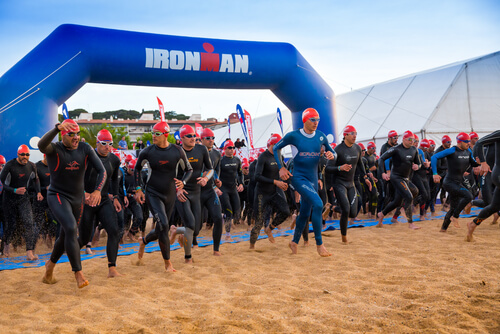
The growth of triathlon over the last 20-40 years has been quite remarkable. Worldwide, on a seemingly daily basis, races and events continue to expand, training and technological information constantly allows athletes to learn more about the sport and athletes, new and old, of all abilities hit the pools, lakes, roads and paths determined to achieve the next race finish, personal best or goal.
In a sport laden with personal challenges and hurdles, the once almost mythical Ironman (IM) Distance remains the ultimate challenge for many. Whether winning world championships or merely crossing the line and collecting the fabled “M Dot”, the 2.4-mile swim, 112-mile bike and 26.2 mile run race is the pinnacle of many athlete’s journeys.
The sheer nature and demands of the event (all triathlon events in fact!), contribute to a high incidence of injury. In a 2013 study of 174 long distance triathletes over a 26-week period, Andersen et al1 found that overuse injury was the prevalent injury amongst iron-distance triathletes. The average prevalence of overuse problem was 56% at any time, with a substantial problem incidence of 20%. The most prevalent sites were the knee (25%), lower leg (23%) and lower back (23%). The acute injury incidence was 0.97 per 1000 hours of training, and 1.02 per 1000 hours of competition. The predominant types of acute injury were contusions, fractures and sprains. Therefore, a total of 87% of the athletes reported some form of overuse problem at some point over the course of the study, with more than half reporting a substantial problem. This supports other studies reporting a high incidence of overuse injury in iron-distance triathletes. 2-4
So, how can we prevent, or more accurately perhaps, reduce the risk of encountering such problems and maximising our chances of getting to the start line and performing to the best of our abilities? These are The Endurance Physios top tips:
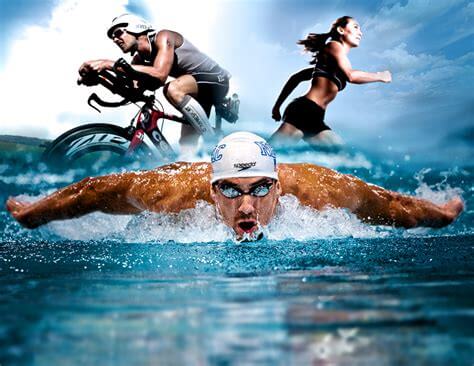
Goal Setting
This should be the first thing any IM or budding IM does. Ask yourself, what do I want to achieve? Are you aiming to simply get through the 140.6 miles and cross the finish line? Are you aiming for a specific time and/or PB? Some people are primarily entering the race to raise money/awareness for a charity. Before any plans can be formulated, you must understand what it is you are planning for. Every aspect of the coming 4-12 months will be determined by your goals. Duration, intensity, the frequency of training, location, climate and course profile of the race may all be driven by timescales and events to do with your goal.
Choose the right training regime
Arguably the most important and crucial decision that lies ahead. The triathlon world is now saturated with coaches and programmes that are readily available. From the highly popular “one size fits all” named coaching system type regimes to bespoke 1:1 tailored regimes to the popular website/magazine downloadable standard issue regimes, there are a plethora of regimes purporting to get you to your goal. However, if you choose the one that pushes you too hard too soon, based on your current levels or the timescales available, you may increase injury risk and fail to make the start line! Choose the regime that doesn’t push you enough and that PB, podium finish, age-group qualification may never materialise. If possible, speak to an established coach with a high success rate of IM finishers and go for the tailored approach. The extra outlay in cost will be more than worth it, especially if it means you don’t lose out on hotel and race fees due to injury or end up paying someone like myself, even more, to get you to the start line!!! If you do use a “cut and paste” type regime, check that it progresses load appropriately. Gabbett et al 5 outline the risk of injury via an excellent (and easy to use) calculation of acute (1 week) versus chronic (last 4 weeks) workload. The same author also states that it isn’t necessarily the amount of workload that you do that determines injury, more so, it's about how you get to that workload via progression that may be the biggest factor leading to injury.
Prepare for the training regime
I see a lot of IM athletes who pick up niggles and injuries by simply failing to prepare for a regime. They choose their race, choose a training regime and jump straight into it. Unfortunately, for many, there is a gap between our current ability and the level needed even to commence a 20-24-week IM regime. Plan backwards and add 6-12 weeks as needed prior to commencing the regime building a sufficient base level of fitness, technique, and strength in preparation for the actual training regime.
Get Strong!
Recent years have seen an increase in the evidence supporting Strength and Conditioning (S & C) for endurance sports. Research suggests that S & C can reduce overuse injuries by almost 50% (Lauersen et al, 2014).6 Performing 2 sessions in the off season, coupled with a once weekly maintenance session in season appears an effective strategy for endurance athletes. 7 I would argue that EVERY top endurance athlete now undertakes a considerable amount of S & C as part of their regime to assist in helping their bodies adapt and manage high training loads. A general approach, largely able to be performed at home should suffice. If in doubt, seek advice from a professional regarding specific exercises for triathlon.
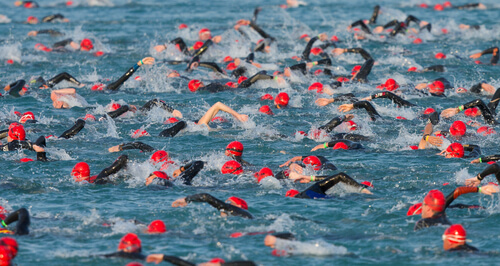
Manage existing aches and pains
Very few IM athletes are lucky enough to avoid the usual niggles associated with such high loads and high-frequency training. Many triathletes I see have dealt with the same recurring niggles for many years. Stepping up to such big distances as IM can be the trigger for exacerbating niggles into larger problems. Seek advice and guidance from a therapist, explaining your plans and work together to address these issues to allow you the best chance of completing the training and race ahead.
Time Management
For many triathletes, finding the balance between work, family, social and training commitments can be the hardest factor in an IM preparation. Even with the most supportive loved ones and colleagues, it can be difficult to fit everything in and find a balance. Try to plan novel ways to maximise these without detrimentally affecting other aspects. For example, can you use a work commute to train, can you train early in the morning or after the kids are in bed? Can you train with friends and family? Maybe someone would like to join you for part of a run, you could run as the family cycle, you could swim in the pool before the family joins you for a splash? I know athletes that have concocted all sorts of weird and wonderful strategies to maintain the balance. Group holidays where the athletes train in the morning together before enjoying the day on the beach with the families. Ultimately, this, as most aspects are, is a very individual component, sit down and discuss how to manage these things with the people involved. Finding this balance may not directly reduce injury risk, however, those struggling to find a balance are more likely to cram in sessions, overtrain, deviate from plans and limit recovery. These are factors which can all lead to injury.
Plan your season and races
The age-old dilemma of what races should I do building up to an IM! I advocate using other races as preparation. How many, how often, how hard to race depends on a number of factors. I generally feel that these should be used as organised training sessions to practice using new kit, feeding strategies, pacing etc and as a break from the monotony of training. Be careful not to become involved in a race with another competitor who undoubtedly has different seasons goals to yourself and deviate from the plan as not only will you lose the purpose of the race, but you will potentially affect subsequent weeks training and/or recovery.
Pick the right team
No successful athlete achieves success on their own. Many leading individual athletes these days are surrounded by an entourage of support staff. The endurance world is packed with people who support and encourage each other. Grow a network of therapists, athletes, coaches, friends and loved ones that you can turn to when needed. This includes a race day support team to cheer you on!
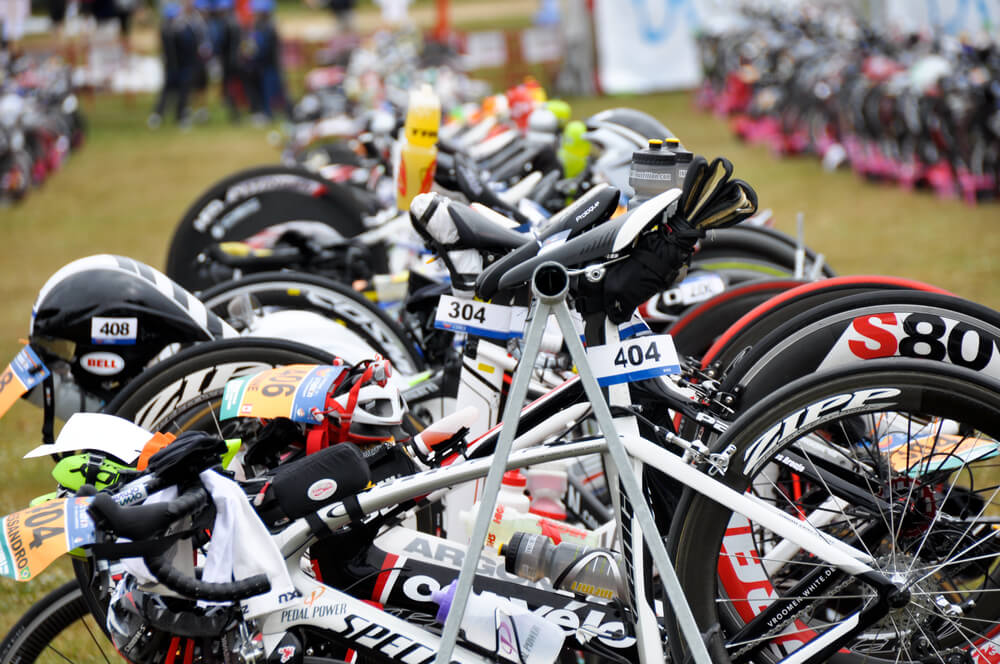
Prepare for everything
As many leading sports people and coaches now advocate “control the controllables”. Yes, an IM is daunting, and it is difficult to prepare for every eventuality. But use your time to practice training in climates and terrains that reflect the race course if possible. Practice different hydration and feeding strategies and kit.
Be consistent, but flexible
Consistency is the key to endurance sports success. Those big, hard sessions and miles are needed to put credit in the bank if you expect to cash them in on race day. Stick to your plans, commit to the regime. However, life gets in the way sometimes and other commitments and/or injuries can sidetrack you from time to time. Don’t chase the sessions you miss, don’t cram extra miles or speed into follow up sessions. If you are training correctly 80% of the time, then you will almost certainly achieve your goals. It is better to line up at the start line, slightly “undercooked” than “overcooked”. Injuries and the potential for injury will be far greater if you lack the ability to listen to the body and use a sprinkling of common sense.
Recover
In all my years of competing, treating and coaching athletes this is the single biggest factor that is neglected and ultimately leads to injury. It is the fine balance between stressing the body and allowing it to recover that maximises performance and minimises fatigue and injury risk. Everybody is committed to training like a “pro” but we need to be equally committed to recovering like a “pro” as well! A structured training regime will factor in recovery weeks and blocks of periodised training to allow recovery. Many methods both scientific and more anecdotal are available to monitor fatigue both in the short and longer term. Seek the advice of an expert on finding out about these.
Eat well, sleep well, hydrate and enjoy downtime with friends and family – you will be earning it. Much debate exists regarding the effectiveness of tools such as foam rollers/trigger point devices, tapes, massage, compression clothing, cryotherapy and heat, and yes there will always be a large placebo effect to consider. But as long as you are training, strengthening and recovering well, then these tools can help get you to the start line.
I regularly see many athletes in training for a “check-up”, some soft tissue work and other modalities to help them recover and relax in preparation for the next phase of training. Seek the advice of a professional regarding what may work for you. Remember – train hard, recover harder!
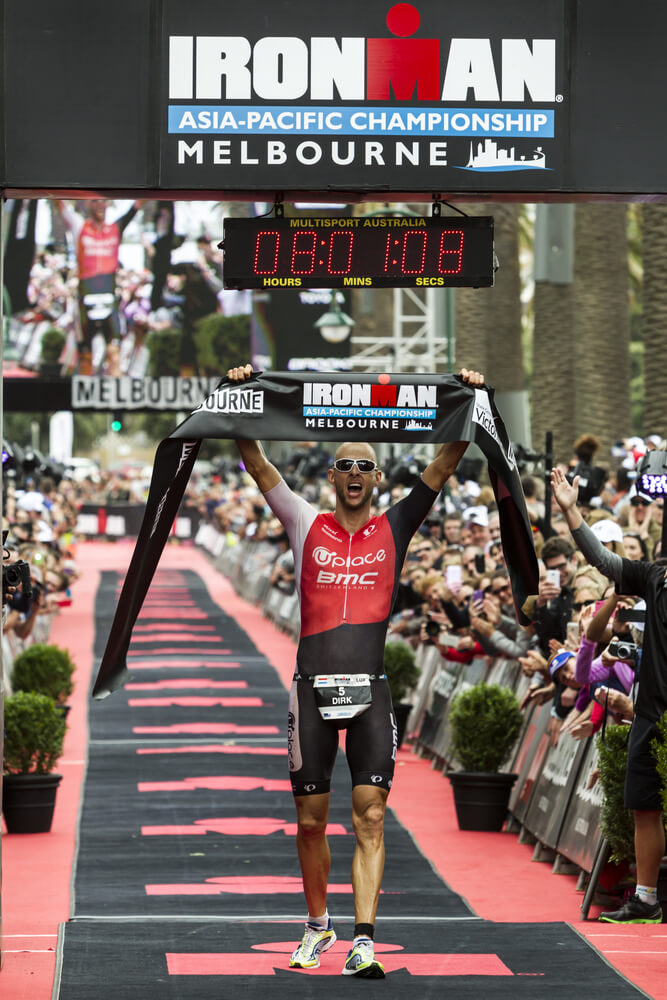
Take home messages:
1) Train wisely – increase load on the body gradually. Factor in enough recovery – this is where we improve! Quality trumps quantity every time.
2) Get strong and stay strong as it appears to be the biggest factor we can actively affect in reducing injury risk and improving performance.
3) Plan everything – the 5 P’s (Prior Planning Prevents Poor Performance!).
4) Be consistent, but flexible. – anyone who achieved anything remarkable did it through consistency. Be the Bamboo! – be committed and stick to your regime / plans, but always be prepared to bend a little if needed but get back on the plan as soon as possible!
And remember……… whatever your goal, whatever your level, however many IM you have completed……enjoy it, it’s fun!
For further details about Mike and to book an appointment go to https://www.sportsinjuryfix.com/business/profile/the-endurance-physio. Mike also runs bespoke workshops on all aspects of endurance sports, as well as running his flagship, one day course entitled “Optimising Endurance Performance”.
1 Andersen CA, et al. (2013). High prevalence of overuse injury among iron-distance triathletes Br J Sports Med; 47:856–860.
2 Egermann M, et al. (2003). Analysis of injuries in long-distance triathletes. Int J Sports Med; 24:271–6.
3 Burns J, et al. (2003). Factors associated with triathlon-related overuse injuries. J Orthop Sports Phys Ther ;33:177–84.
4 Vleck VE, et al. (2010). Triathlon event distance specialization: training and injury effects. J Strength Cond Res; 24:30–6.
5 Gabbett TJ, et al. (2016). The acute: chronic workload ratio predicts injury: high chronic workload may decrease injury risk in elite rugby league players. Br J Sports Med; 50:231-236.
6 Lauersen JB, et al. (2014). The effectiveness of exercise interventions to prevent sports injuries: a systematic review and meta-analysis of randomised controlled trials. Br J Sports Med; 48:871–877.
7 Karsten, B., et al. (2016). The Effects of a Sport-Specific Maximal Strength and Conditioning Training on Critical Velocity, Anaerobic Running Distance, and 5-km Race Performance. Int J of Sp Phys and Perf ;1, 80 -8.
